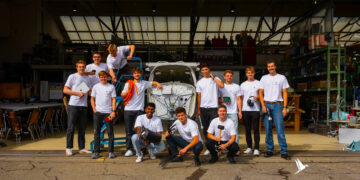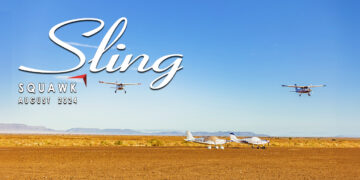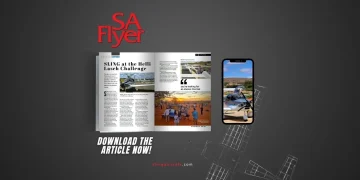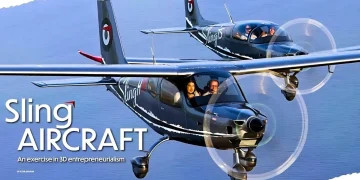
A team of 47 ambitious students from the TU Delft, Willem de Kooning Academie, InHolland Delft, Haagse Hogeschool, VU Amsterdam, Erasmus University Rotterdam and Utrecht University in the Netherlands are on a mission to build the world’s first liquid hydrogen-powered aircraft. Introducing Project Phoenix.
The team plan on executing their mission by designing, manufacturing and finally flying a full-scale Sling 4 aircraft powered by hydrogen. Phoenix is the world’s first liquid hydrogen fuel cell aircraft where they remove the emissions altogether by powering the aircraft with the lightest of all elements: hydrogen. With a maximum take-off weight of 920 kg and a wingspan of 10 m, the team received their kit in July 2021 and have begun working on integrating all the systems to be able to fly their first Full-Scale flight with a crew of two.
Although Project Phoenix starts as a world first, the students firmly believe that the aviation industry needs to follow their example and they ultimately aim to inspire the bigger companies.
The 1:3 scale prototype is powered by a 1500W fuel cell coupled with a battery pack for take-off power and safety. Hydrogen is kept in a cryogenic tank at -253°C and warmed to 0°C using a complex tubing system.
Powered by an electric motor on its tail, Phoenix is able to fly for 7h with just 1kg of liquid hydrogen, covering a distance of more than 500km. These endurance and range values are unmatched by batteries and conventional fuels.
In September 2020, they began working on the project. The gaseous hydrogen-powered Sling 4 is set to fly in 2022, followed by its liquid hydrogen counterpart in 2024.
2025: First hydrogen-powered flight around the world
2035: First commercial, hydrogen-powered aircraft.
A number of solutions to the sustainable aviation problem have been advocated in the past. Broadly speaking, these solutions fit into three categories: kerosene equivalents, batteries and hydrogen. Biofuels and synthetic kerosene, although a potential temporary solution to the aviation industry’s carbon emissions are not sustainable in the long term. The impact on air quality as a result of NOx emissions by combusting kerosene or kerosene equivalents is up to 4.4 times higher than the impact of CO2 emissions on the environment.
Batteries are not suited for aviation on their own due to their weight. However, battery and hydrogen technologies are closely linked since both make use of the same electric engines. Hydrogen in gaseous and liquid states, as well as contained in carrier fluids, is seen by many to be the long-term solution. A single wind turbine would be able to provide the power for a commercial aircraft. Fuel cell technology has the potential to change not only aviation but transportation in general, leading to a sustainable, future hydrogen economy.
The team are also working internationally to develop certification guidelines for hydrogen propulsion. They firmly believe that their work can be used to have the first hydrogen-powered passenger aircraft such as the Greenliner flying by 2030, potentially by a spin-off start-up.
Aerodelft are looking for additional partners to join them in this adventure. Find out more about the possibilities of getting involved here.















